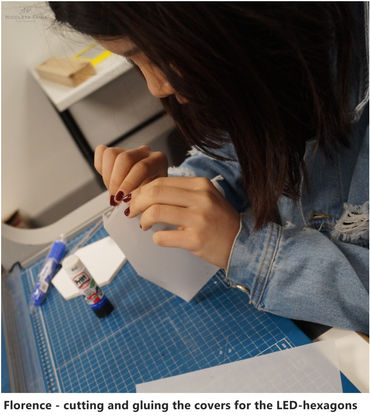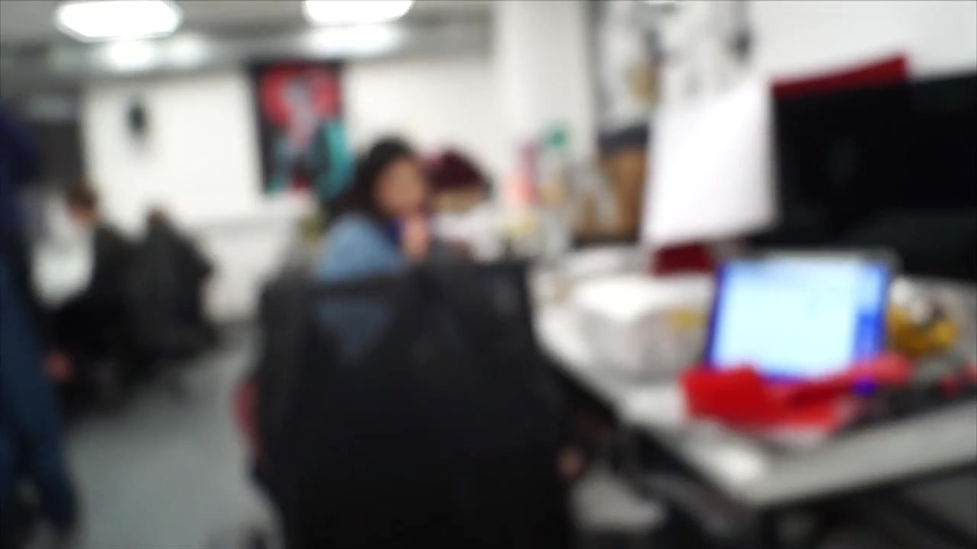
PROJECT DEVELOPMENT PHASES
The purpose of this project is the creation of a physical game based on a specific space of our choosing within London College of Communication (Part of London University of Arts).

Collaborative project
Interaction Design Arts: Nicoleta Faina, Florence Zhou and Luisa Charles
+ Games Design: Cordelia Chui and Alexander de Jesus.
Games have been part of every culture since ancient times.
Games represent an escape from our “real world”.
They provide a fast feedback for each action, the response that often is delayed, neglected or hidden in our everyday experiences.
Amongst releasing tension and improving the mood, games allow us to discover ourselves, take risks and become a better person. They help to develop problem-solving skills: think quick and make fast decisions and analyses. Games enhance creativity, memory, coordination and space orientation.
Initial ideas of space:
-
Chairs & empty walls in front of those: entertain those who sat on them??, or count how many people prefer a certain chair, make teams: group of chairs against another group of chairs.
-
Hunt for treasure with clues that lead you to another space.
Final Choice:
-
Corridors through which many students hurriedly walk: a fast one-turn player game to offer the possibility to participate for most of them. Implementing the wall’s parallelism will facilitate a possible competition between two teams.
Chosen Space:
The corridor that leads to Atrium and makes the connection between the main part of Design and Media Block.

Initial Game
Connecting strangers with square tiles :
each player will be given a tile on which he/she will draw two lines to connect it’s centre with any 2 midpoints of the square’s edges. The participant will then leave the tile he just drew and pick up the one that the person before him drew. This tile will need to be placed on the wall to connect and continue the drawn line from the previous tile. (This will make the game more entertaining as the player will have to draw guessing what will be the best lines that will facilitate a better chance to be used by the next player.) There will be check-points with corresponding scores, obstacles and candy rewards.
( + The record of their participation will be kept in form of a signature on the back of the tile if they wish to do so.)
After PRESENTATION :
The rules of the game seemed confusing and it needed to be more spectacular -> Light responsive: The tiles will conduct electricity to lit up the final point. Instead of drawing on the tile, the player will adhere the copper tape on it.
The lines become a path for energy from the starting tile containing a flat battery to the final LED integrated tile.
After PLAY - TEST :
-
The player would be more entertained if there will be multiple check-points – stops in between – where we have LEDs that light up, rather than a simple A-B plan.
+ The battery conducts its energy through copper tape at a distance of 1m. Keeping account of the wall’s dimensions, the LED stops followed by the tiles with enclosed batteries seemed a necessity.
+ The participant will be forced to rationalize their decision rather than just wonder on the wall, randomly choosing the position of the tile.
-
The square tile limited the player to 4 lines directions to choose from.
The hexagon shaped one will give the player extra 2 other sides to play with.
+ Consequently, all obstacles or points that must be hit need to be hexagonal.
+ In a dead-end situation, removing 2 tiles and switching/replacing them solves the problem.

Final Game
One-turn player physical game:
Hexagonal tiles with electrically conductive system and light responsiveness.
”Puzzle” race with LED check-points, between two teams, based on opposite walls of an agglomerated corridor within LCC.
(More details in the Incubation Phase)
MATERIALS (about 100£) :
-
Hexagon Tiles and Obstacles: 15xA1 sheets of white foam board. Laser cutting the shapes wasn’t affordable, so we used cutters.
-
Responsive Light Systems: Rolls of copper foil electricity conductive adhesive tape (9,8mm(w) x30m), 3V batteries and colourful LEDs
-
Attachments: Double sided tape to stick up the and white tape to cover the copper tape on the wall.

MAKING OF :
Cutting: After calculating the optimal size of hexagons to fit in one sheet, we drew the outlines and cut them out using steel rules and cutter knifes -> approx. 600 hexagons.
Creating the Checkpoint Systems

=
-
40 check-point systems, composed of 40 LED tiles and 40 battery tiles.
-
20 check-points for each team.
-
4 LED colours: Green, Yellow, Red and Blue - 10 LED tiles for each colour; 6 LEDs for each LED tile

Light diffusers for LED tiles :
40 “domes” to cover the LED tiles,
made of tracing paper and used to gain a greater visual impact and a larger coverage of the light.
Colouring :
The obstacles (few tiles, hexagon-clusters and left-over pieces of foam-board) were painted in Mauve and Turquoise with the intention to differentiate visually the two teams. Copper acrylic was used on the edges of the obstacles, to harmonise those with the copper tape used in the game.

Check-point cluster systems :
Straightened paper clips were used to fix the LED tiles next to the Battery Tiles. (The metal was pushed inside the foam.)
The midpoints of each side of the hexagons meant to be played were marked: 250 reds and 250 blues.

We attached the obstacles on the walls but the adhesive was not strong enough to keep the heavier ones. The same double-sided tape was attached to the back of each tile meant to take part in the puzzle race.

The game started at noon on 9th of February.
The creator’s team were in the corridor assuring on the smooth flow of the game.
We needed to assist each player as, even if it could be played based on monkey-see – monkey-do act, some of the rules weren't obvious (e.g. leave your tile for the next player and use the one that was left by the previous player). Adding to this, we didn't have any text or sign-age to explain how the game takes place. The tiles and cut copper tape had to be held by us and handed over, watching for the rules to be followed. Sometimes the positioned tiles won’t make contact, either due to inaccurate attachment of the tape on the tile or the gap between some of the puzzle tiles. Thus, we had to mend the copper line for it to successfully lit up the LED checkpoint.
It was spectacular seeing how strangers unite and take part in a competition with a 1-minute unique participation. A noticeable more enthusiastic attitude was observed to come from groups rather than singles.
At the end of the day the Turquoise team was announced as the winner !!!
Coming Soon...
Coming Soon...
Coming Soon...
Coming Soon...
Coming Soon...
Coming Soon...
FEEDBACK:
-
Rules were difficult to understand, needed describing in clear language and perhaps diagrams.
-
Took a long time to set up the game, more work could have been done in preparing the hexes before going to the space.
-
Once the game had started and had multiple players go through, it clearly created an interesting system. Perhaps only one wall was necessary rather than two parallel walls. Location was suitable but not especially unique, corridors and walls exist in that format in nearly all buildings.
- Tobias Revell (Senior Lecturer, BA (Hons) Information and Interface Design and BA (Hons) Interaction Design Arts)
Future:
MASS-PRODUCED ?
The game’s items’ value makes the mass-producing possible. However, the rules must be more intuitive than based on verbal or written explanation as it a game devised for a fast-paced environment.
It could be packaged in a designed rectangular cardboard box and could be played by office workers as a fun activity uniting all employers, releasing their tension and representing an escape from monotony.
GAME DAY #2/ Alterations ?
An everyday element in the office life: The metal plate at the top of the place where employers have their lunch. The hexagons tiles could be magnets with inscribed electrically conductive lines. There are LED hexes and people when they come for a coffee attach and move hexes and create a led conductive system. Fun.























